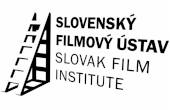And for countries which have had small funds and typically produce low budget films, that has left an opening for young female producers. The bigger the budget, the fewer women get funding; the lower the budget, the higher the percentage of women.
For German producers, the ceiling is 3 m EUR films, whereas for countries like Macedonia, Slovakia and the Baltics, where budgets in that range are unthinkable, women have a dominant position in the market. One of the major factors involved is the position of TV funding. When TV funds are a large factor in budgeting for films, the stations are more likely to greenlight films headed by men. That factor can be seen in a country like the Czech Republic, where TV funding is still an important factor; and it is viewed in a reverse image in Poland, where funding shifted from TV to the Polish Film Institute and opened the gate to the younger generation of Polish women in filmmaking.
Austria is taking a leadership role in moving toward male-female parity in film production. Representatives of the Austrian Film Institute said they noticed that women made up only 1/3 of applicants for funding, as well as 1/3 of the recipients and got 1/3 of the funds. The Austrian Film Institute initiated a new aspect into their points system, allotting extra points for women in key roles, the highest points going for female producers and directors.
Bulgaria is one of several CEE countries where there are more female producers, but not many women working as directors. In Macedonia, the majority of the students and recent graduates at film schools now are young women. Spanish women in film had a novel approach for tackling the problem: they started a Facebook campaign against buying products aimed at women which were advertised on shows without women in creative roles.
The panel elicited continued conversation and networking at Cottbus, and Connecting Cottbus director Rebekka Garrido told FNE she would like to continue hosting the roundtable in future years.



















